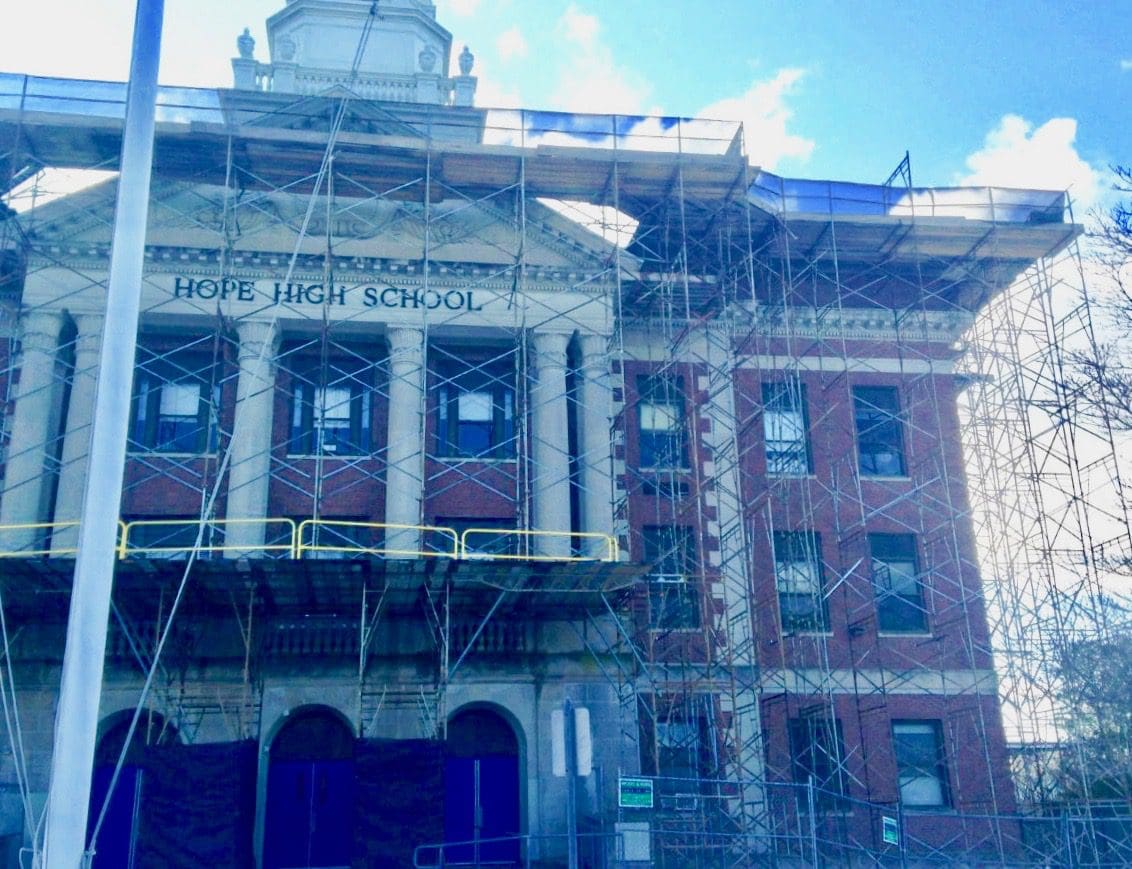Search Posts
Recent Posts
- Dr. Rosemary Costigan Named President of Community College of Rhode Island June 19, 2025
- RI Veterans: Did you know? 19.06.25 (Military Funerals, Job Fair, Benefits, Events) – John A. Cianci June 19, 2025
- East Providence First in U.S. to Equip All Firefighters with PFAS-free Gear June 19, 2025
- We Cook! Mill’s Tavern Saffron Bouillabaisse with Tarhana Lobster Jus June 19, 2025
- Rhode Island Weather for June 19, 2025 – Jack Donnelly June 19, 2025
Categories
Subscribe!
Thanks for subscribing! Please check your email for further instructions.

Is this what success looks like? Hope’s ELL needs and teacher staffing
By Richard Asinof, ConvergenceRI.com
The scaffolding surrounding Hope High School provides tangible evidence that work is underway to repair the infrastructure of the school building, at least from the outside looking in.
But what is happening on the inside, regarding repair of the curriculum for students attending classes at Hope High School?
There were some 812 students who were enrolled in grades 9-12 at the start of the 2019-2020 academic year, according to available data sources.
More than one-third – 326 students – have been designated as English Language Learning, or ELL students. That number grows to 449 if it includes all the students who were designated ELL students. Some students have waived services but may still need annual testing.
Translated, that means that more than half the students currently enrolled at Hope High School are being monitored for their English language proficiency. That is a big number of students.
The average class size for teachers working with ELL students was estimated to be around 27 students.
Questions to be answered
Here are some questions, hopefully, that can be answered by R.I. Education Commissioner Angélica Infante-Green, or by Hope High School Principal Matthew Buchanan and his administrative team.
The first question is: What kinds of services are available for ELL students at Hope High School, if any exist, beyond the classroom?
The second question is: How many students who are ELL students at Hope High School lack a regular teacher? Does that mean that instruction is day-to-day, fill-in-the-blank, with no continuity, no lessons, and little learning?
The third question is: What are the proficiency levels of ELL students at Hope High School? The anecdotal evidence is that the high school serves students with little or no English proficiency, the ones who need the most support to succeed in academics.
As best as could be determined, the breakdown of ELL students at Hope High School has 141 students designated as “entering,” 82 students designed as “emerging,” 80 students designated as “developing,” 59 designated as bridging and 4 as “reaching.” Is that an accurate assessment?
The fourth question is: What are the numbers of special education students who are in self-contained special education classes and are also classified as ELL students? Are they getting all the educational services as required by law? Is there a potential violation of standards established by the U.S. Department of Justice decree?
The fifth question is: If these dire conditions exist for ELL students at Hope High School, many of whom may lack a regular teacher, what are the kinds of urgent responses and solutions that could remedy the situation?
Perhaps the most important benchmark in answering these questions revolve around future hiring plans: Are there plans to hire a full-time ELL teacher and a full-time ELL substitute? What is the schedule to complete such hiring? Is Hope High School actively advertising for ELL teaching positions. Youth wants to know.
For complete story: http://newsletter.convergenceri.com/stories/is-this-what-success-looks-like,5478

Richard Asinof is the founder and editor of ConvergenceRI, an online subscription newsletter offering news and analysis at the convergence of health, science, technology and innovation in Rhode Island.
